Florence Italy Attractions:Must-See Landmarks & Hidden Gems
Searching for Florence Italy attractions? Discover the top must-see sights from Michelangelo's David at the Accademia to the breathtaking Duomo, Ponte Vecchio's golden shops, and Uffizi's Renaissance masterpieces in 2025!
Table of Contents
- 1. Historical Landmarks: Stepping Back in Time
- 2. Cultural Highlights: Experiencing Florence's Soul
- 3. Natural and Scenic Spots: Exploring Florence's Outdoors
- 4. Seasonal Activities: Embracing Florence's Rhythms
- 5. Accommodation Guide: Finding Your Perfect Stay
- 6. Culinary Delights: Savoring Florence's Flavors
- 7. Practical Tips: Navigating Florence with Ease
- Q&A: Answers to Your Burning Questions
Welcome to Florence, the cradle of the Renaissance and a city brimming with history, art, and culture. As a local who has walked these cobblestone streets countless times, I'm excited to share with you the hidden gems and iconic landmarks that make Florence a must-visit destination. Whether you're a history buff, an art lover, or simply seeking a taste of la dolce vita, Florence has something for everyone.
1. Historical Landmarks: Stepping Back in Time
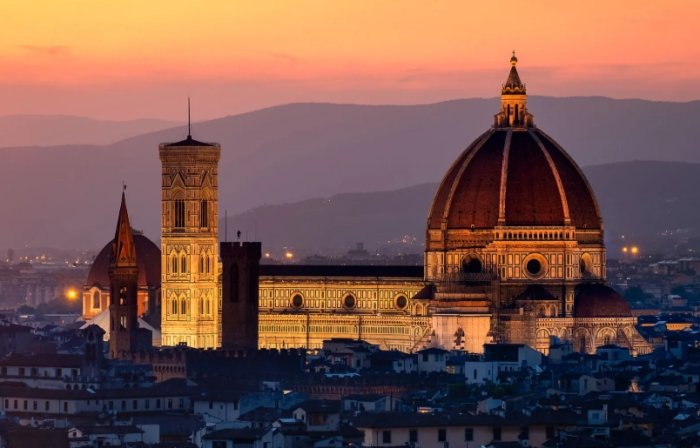
1.1 The Duomo (Florence Cathedral)
- Historical Background: The Duomo, officially known as the Cattedrale di Santa Maria del Fiore, is the fourth-largest church in the world and a symbol of Florence's Renaissance glory. Construction began in 1296 under the guidance of Arnolfo di Cambio and was completed in 1436 with the installation of the iconic dome designed by Filippo Brunelleschi.
- Cultural Significance: The Duomo is not just a religious site but a masterpiece of architecture and engineering. Its dome, the largest masonry dome in the world, remains an engineering marvel to this day.
- Natural and Humanistic Landscapes: The exterior of the Duomo is adorned with white, green, and pink marble, creating a stunning visual contrast. Inside, the nave is vast and filled with light, while the frescoes and stained glass windows add to the grandeur.
- Opening Hours: The Duomo is open daily from 10:00 AM to 5:00 PM (last entry at 4:30 PM). The dome is open from 8:30 AM to 7:00 PM (last entry at 6:00 PM) from April to September, and from 8:30 AM to 5:30 PM (last entry at 4:30 PM) from October to March.
- Ticket Prices: Access to the Duomo is free, but tickets are required for the dome (€18), baptistery (€6), and crypt (€3). A combined ticket for all three sites is available for €24.
- Transportation: The Duomo is located in the heart of Florence, easily accessible by foot from most parts of the city. If you're staying further away, take the bus (lines C1, C2, or C3) to the "Duomo" stop.
- Best Time to Visit: Early morning or late afternoon are the best times to visit to avoid the crowds and enjoy the soft light filtering through the stained glass.
- Special Events: The Duomo hosts various religious ceremonies throughout the year, including Easter Mass and Christmas Eve services.
- Accommodation Recommendations: For a truly authentic experience, stay at the Hotel Brunelleschi, located just steps away from the Duomo. This boutique hotel offers elegant rooms with views of the cathedral.
- Food Recommendations: After visiting the Duomo, head to Trattoria Sostanza for a traditional Tuscan meal. Their signature dish, the butter chicken, is a must-try.
- Tips: Wear comfortable shoes as there are many steps to climb to reach the top of the dome. Also, be prepared for security checks at the entrance.
1.2 Uffizi Gallery
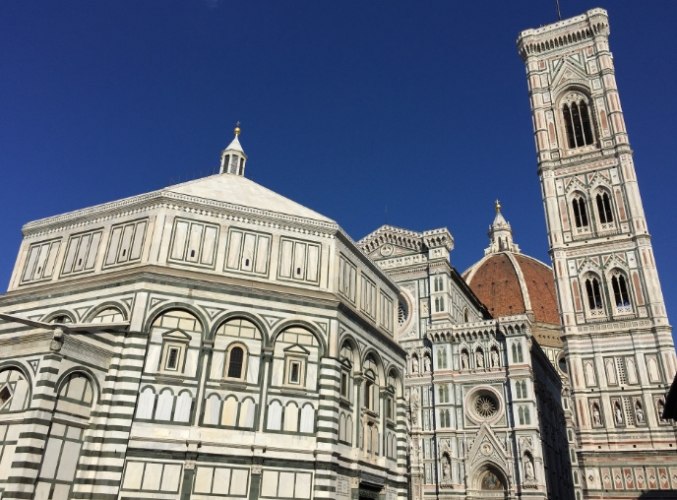
- Historical Background: The Uffizi Gallery is one of the oldest and most famous art museums in the world, housing an extensive collection of Renaissance masterpieces. It was originally designed as offices (uffizi) for the Medici family in the 16th century and later transformed into a museum in the 18th century.
- Cultural Significance: The Uffizi is home to works by some of the greatest artists of all time, including Botticelli's "The Birth of Venus," Leonardo da Vinci's "Annunciation," and Michelangelo's "Doni Tondo."
- Natural and Humanistic Landscapes: The gallery's long corridors and grand halls are filled with light, creating a serene atmosphere for viewing the art. The views from the windows overlooking the Arno River are also breathtaking.
- Opening Hours: The Uffizi is open Tuesday to Sunday from 8:15 AM to 6:50 PM. It is closed on Mondays.
- Ticket Prices: Tickets cost €20 (€12 for EU citizens aged 18-25). Advanced booking is highly recommended to avoid long lines.
- Transportation: The Uffizi is located near the Ponte Vecchio and can be reached on foot from most parts of the city center. Alternatively, take the bus (line C1 or C2) to the "Uffizi" stop.
- Best Time to Visit: Weekdays are generally less crowded than weekends. Arriving early in the morning or late in the afternoon can also help you avoid the peak hours.
- Special Events: The Uffizi occasionally hosts temporary exhibitions and special events. Check the museum's website for the latest information.
- Accommodation Recommendations: The Hotel Savoy, a luxury hotel located just a few minutes' walk from the Uffizi, offers elegant rooms and a rooftop terrace with stunning views of the city.
- Food Recommendations: For a pre- or post-museum snack, visit the historic Gelateria della Passera, known for its delicious homemade gelato.
- Tips: Book your tickets online in advance to skip the long lines. Also, consider taking a guided tour to gain deeper insights into the artworks.
2. Cultural Highlights: Experiencing Florence's Soul
2.1 Ponte Vecchio
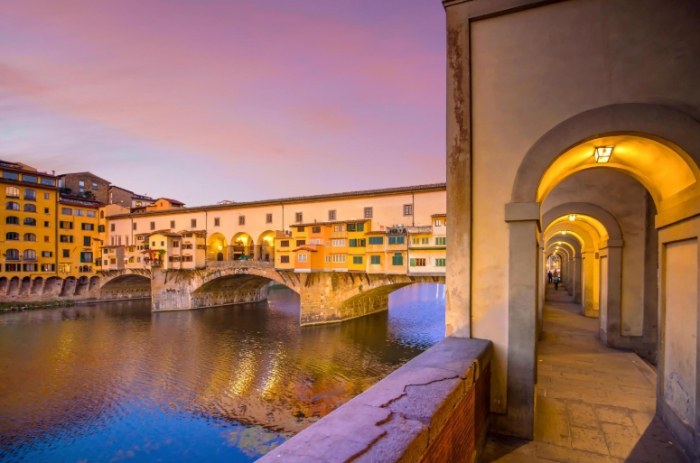
- Historical Background: The Ponte Vecchio, or "Old Bridge," is one of Florence's most iconic landmarks. It spans the Arno River and is lined with shops selling jewelry, art, and souvenirs. The bridge has been in existence since Roman times, but the current structure dates back to the 14th century.
- Cultural Significance: The Ponte Vecchio is not just a bridge but a living symbol of Florence's commercial and artistic heritage. It has been featured in countless paintings, poems, and films.
- Natural and Humanistic Landscapes: The view from the Ponte Vecchio is particularly enchanting at sunset, when the golden light reflects off the river and the surrounding buildings. The bridge is also a popular spot for street performers and photographers.
- Opening Hours: The Ponte Vecchio is open 24/7, but the shops typically operate from 10:00 AM to 7:00 PM.
- Ticket Prices: Access to the bridge is free.
- Transportation: The Ponte Vecchio is easily accessible by foot from the city center. If you're staying further away, take the bus (line C1 or C2) to the "Ponte Vecchio" stop.
- Best Time to Visit: Early morning or late afternoon are the best times to visit to avoid the crowds and enjoy the peaceful atmosphere.
- Special Events: The Ponte Vecchio is often decorated with lights during the holiday season, creating a magical ambiance.
- Accommodation Recommendations: The Hotel Lungarno, located just steps away from the Ponte Vecchio, offers luxurious rooms with river views and a Michelin-starred restaurant.
- Food Recommendations: For a romantic dinner overlooking the Arno, head to the Golden View Open Bar, a rooftop restaurant with stunning views of the Ponte Vecchio.
- Tips: Be cautious of pickpockets, especially in crowded areas. Also, consider taking a boat tour along the Arno to see the bridge from a different perspective.
2.2 Bargello National Museum
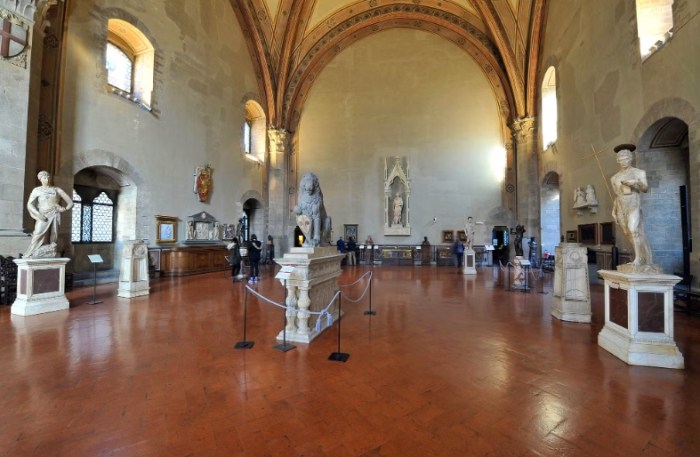
- Historical Background: The Bargello National Museum is housed in a former palace that was once the seat of the city's chief magistrate. It is now one of Florence's most important museums, dedicated to sculpture and decorative arts from the Middle Ages to the Renaissance.
- Cultural Significance: The Bargello is home to masterpieces by Donatello, Michelangelo, and Cellini, among others. Its collection of Renaissance sculptures is considered one of the finest in the world.
- Natural and Humanistic Landscapes: The museum's courtyard, with its elegant loggia and fountain, provides a peaceful retreat from the bustling city streets. The interior rooms are filled with light and offer a serene setting for viewing the art.
- Opening Hours: The Bargello is open Tuesday to Sunday from 8:15 AM to 1:50 PM. It is closed on Mondays.
- Ticket Prices: Tickets cost €8 (€4 for EU citizens aged 18-25). Advanced booking is recommended.
- Transportation: The Bargello is located in the heart of Florence, easily accessible by foot from most parts of the city. If you're staying further away, take the bus (line C1 or C2) to the "Bargello" stop.
- Best Time to Visit: Weekdays are generally less crowded than weekends. Arriving early in the morning can also help you avoid the peak hours.
- Special Events: The Bargello occasionally hosts temporary exhibitions and special events. Check the museum's website for the latest information.
- Accommodation Recommendations: The Hotel David, a charming boutique hotel located near the Bargello, offers comfortable rooms and a peaceful garden.
- Food Recommendations: For a casual lunch, visit the historic Osteria del Cinghiale Bianco, known for its delicious Tuscan cuisine.
- Tips: The Bargello is a smaller museum compared to the Uffizi, so you can easily explore it in a few hours. Consider taking a guided tour to learn more about the artworks.
3. Natural and Scenic Spots: Exploring Florence's Outdoors
3.1 Boboli Gardens
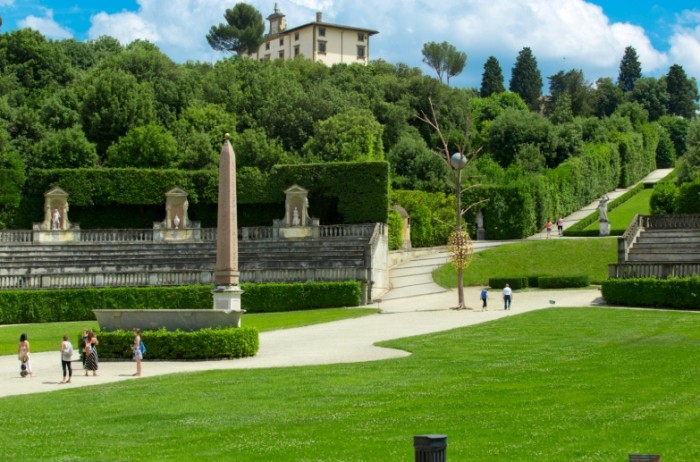
- Historical Background: The Boboli Gardens are a vast park located behind the Pitti Palace. They were designed in the 16th century for the Medici family and are considered one of the finest examples of Italian Renaissance gardens.
- Cultural Significance: The Boboli Gardens are not just a beautiful green space but a living museum of art and architecture. They are filled with fountains, sculptures, and grottoes, creating a magical atmosphere.
- Natural and Humanistic Landscapes: The gardens offer stunning views of Florence and the surrounding hills. The Isolotto, a small island in the middle of a pond, is particularly enchanting.
- Opening Hours: The Boboli Gardens are open daily from 8:15 AM to 6:30 PM (last entry at 6:00 PM) from March to October, and from 8:15 AM to 4:30 PM (last entry at 4:00 PM) from November to February.
- Ticket Prices: Tickets cost €10 (€5 for EU citizens aged 18-25). A combined ticket with the Pitti Palace is available for €18.
- Transportation: The Boboli Gardens are located near the Pitti Palace and can be reached on foot from the city center. Alternatively, take the bus (line C1 or C2) to the "Pitti" stop.
- Best Time to Visit: Spring and fall are the best times to visit, when the weather is mild and the gardens are in full bloom.
- Special Events: The Boboli Gardens often host outdoor concerts and theater performances during the summer months.
- Accommodation Recommendations: The Villa Cora, a luxury hotel located just a short walk from the Boboli Gardens, offers elegant rooms and a beautiful garden.
- Food Recommendations: For a picnic in the gardens, visit the Mercato Centrale, a historic food market, to pick up some local cheeses, meats, and bread.
- Tips: Wear comfortable shoes as there is a lot of walking involved. Also, bring a hat and sunscreen, especially during the summer months.
3.2 Fiesole
- Historical Background: Fiesole is a charming hilltop town located just a few kilometers from Florence. It was founded by the Etruscans in the 8th century BC and later became a Roman colony. Today, it is known for its beautiful views, ancient ruins, and peaceful atmosphere.
- Cultural Significance: Fiesole is a popular day trip destination from Florence, offering a glimpse into the region's ancient history. The Roman amphitheater, the Etruscan walls, and the Cathedral of San Romolo are all must-see attractions.
- Natural and Humanistic Landscapes: The views from Fiesole are spectacular, with Florence spread out below and the Tuscan countryside stretching out in the distance. The town's narrow streets and medieval buildings add to its charm.
- Opening Hours: Most attractions in Fiesole are open daily, but hours may vary. The Roman amphitheater is typically open from 9:00 AM to 7:00 PM (last entry at 6:30 PM) from April to September, and from 9:00 AM to 5:00 PM (last entry at 4:30 PM) from October to March.
- Ticket Prices: Tickets to the Roman amphitheater cost €6 (€3 for EU citizens aged 18-25). The Cathedral of San Romolo is free to enter.
- Transportation: Take the bus (line 7) from Florence's Piazza San Marco to Fiesole. The journey takes about 20 minutes.
- Best Time to Visit: Spring and fall are the best times to visit, when the weather is mild and the crowds are smaller.
- Special Events: Fiesole hosts various cultural events throughout the year, including music festivals and art exhibitions.
- Accommodation Recommendations: The Villa Le Maschere, a luxury hotel located just outside Fiesole, offers elegant rooms and a beautiful garden with pool.
- Food Recommendations: For a traditional Tuscan meal, visit the Ristorante La Reggia degli Etruschi, known for its delicious pasta dishes and local wines.
- Tips: Wear comfortable shoes as there are many hills to climb in Fiesole. Also, consider taking a guided tour to learn more about the town's history.
4. Seasonal Activities: Embracing Florence's Rhythms
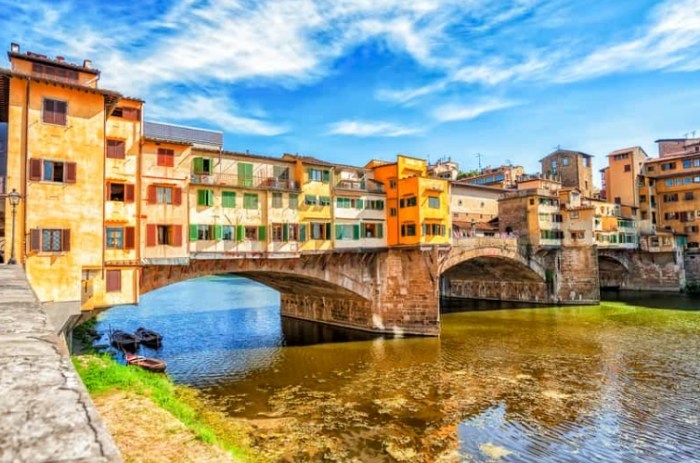
4.1 Spring in Florence
- Activities: Spring is a wonderful time to visit Florence, with the city in full bloom. The Boboli Gardens, the Giardino Bardini, and the Parco delle Cascine are all beautiful places to enjoy the flowers and warm weather.
- Events: The Scoppio del Carro, a historic Easter celebration, takes place in Florence's Piazza del Duomo. A cart filled with fireworks is exploded to symbolize the resurrection of Christ.
- Tips: Book your accommodation and activities in advance, as spring is a popular time to visit Florence.
4.2 Summer in Florence
- Activities: Summer is the perfect time to enjoy Florence's outdoor cafes, parks, and riverside walks. The city also hosts various music festivals and outdoor concerts.
- Events: The Estate Fiesolana, a summer music festival, takes place in Fiesole. The Florence Dance Festival also brings international dance companies to the city.
- Tips: Stay hydrated and wear sunscreen, as summer temperatures in Florence can be quite high.
4.3 Fall in Florence
- Activities: Fall is a beautiful time to visit Florence, with the leaves changing color and the weather mild. The city's museums and galleries are also less crowded during this time.
- Events: The Festa dell'Uva, a grape harvest festival, takes place in nearby Impruneta. The Florence Biennale, an international art exhibition, also takes place in the fall.
- Tips: Take advantage of the cooler weather to explore Florence's outdoor attractions, such as the Boboli Gardens and the Fiesole hills.
4.4 Winter in Florence
- Activities: Winter is a quiet time to visit Florence, with fewer tourists and a peaceful atmosphere. The city's Christmas markets and holiday decorations add to the festive spirit.
- Events: The Natale a Firenze, a Christmas festival, takes place in Florence's Piazza della Repubblica. The city also hosts various New Year's Eve celebrations.
- Tips: Dress warmly, as winter temperatures in Florence can be quite cold. Also, consider visiting Florence's museums and galleries to escape the cold.
5. Accommodation Guide: Finding Your Perfect Stay
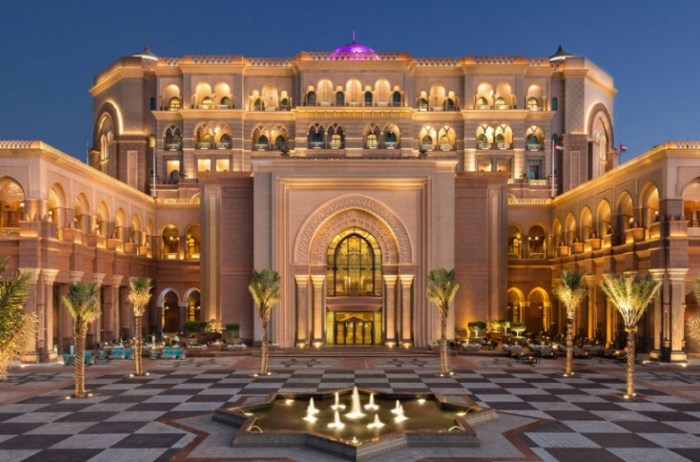
5.1 Luxury Hotels
- Hotel Savoy: Located just a few minutes' walk from the Uffizi, the Hotel Savoy offers luxurious rooms, a rooftop terrace with stunning views, and a Michelin-starred restaurant.
- Villa Cora: A luxury hotel located just a short walk from the Boboli Gardens, Villa Cora offers elegant rooms, a beautiful garden, and a spa.
5.2 Boutique Hotels
- Hotel Brunelleschi: Located just steps away from the Duomo, the Hotel Brunelleschi offers boutique-style rooms with views of the cathedral and a rooftop bar.
- Hotel David: A charming boutique hotel located near the Bargello, Hotel David offers comfortable rooms, a peaceful garden, and a friendly atmosphere.
5.3 Budget-Friendly Options
- Ostello Bello Firenze: A popular hostel located in the heart of Florence, Ostello Bello Firenze offers dormitory-style rooms and private rooms at affordable prices.
- Hotel Azzi: A budget-friendly hotel located near the Santa Maria Novella train station, Hotel Azzi offers simple but clean rooms and a convenient location.
6. Culinary Delights: Savoring Florence's Flavors
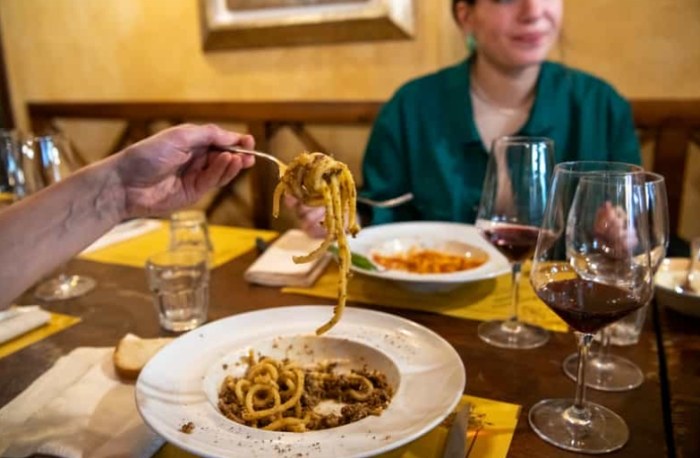
6.1 Traditional Tuscan Dishes
- Bistecca alla Fiorentina: A thick, juicy steak cooked over an open flame, typically served rare.
- Ribollita: A hearty soup made with bread, beans, and vegetables.
- Pappa al Pomodoro: A thick tomato and bread soup.
- Crostini di Fegatini: Chicken liver pate served on toasted bread.
6.2 Must-Visit Restaurants
- Trattoria Sostanza: Known for its delicious butter chicken and traditional Tuscan cuisine.
- Osteria del Cinghiale Bianco: A historic osteria serving authentic Tuscan dishes.
- Golden View Open Bar: A rooftop restaurant with stunning views of the Ponte Vecchio and a menu featuring Tuscan specialties.
6.3 Gelato Shops
- Gelateria della Passera: Known for its homemade gelato made with natural ingredients.
- Vivoli: A historic gelateria that has been serving delicious gelato since 1930.
7. Practical Tips: Navigating Florence with Ease
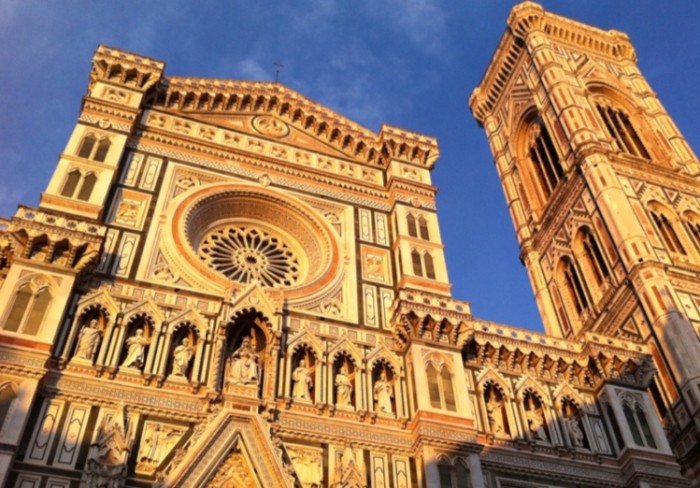
7.1 Transportation
- Buses: Florence's bus system is efficient and covers most parts of the city. Tickets can be purchased at tobacco shops or on the bus.
- Taxis: Taxis are available in Florence, but they can be expensive. Consider using a ride-sharing app like Uber for a more affordable option.
- Walking: Florence is a pedestrian-friendly city, and many of its attractions are within walking distance of each other.
7.2 Safety
- Pickpockets: Be cautious of pickpockets, especially in crowded areas like the Ponte Vecchio and the Santa Maria Novella train station.
- Scams: Be wary of scams, such as people offering to help you with your luggage or selling fake tickets.
7.3 Language
- Italian: While many people in Florence speak English, it's always a good idea to learn a few basic Italian phrases to show respect and make your trip more enjoyable.
Q&A: Answers to Your Burning Questions
1. What not to miss Florence?
- The Duomo: Florence's iconic cathedral with its stunning dome and beautiful interior.
- The Uffizi Gallery: A world-class art museum housing masterpieces by Botticelli, da Vinci, and Michelangelo.
- The Ponte Vecchio: Florence's historic bridge lined with shops and offering beautiful views of the Arno River.
- The Boboli Gardens: A vast park filled with fountains, sculptures, and grottoes.
- A Traditional Tuscan Meal: Sample dishes like bistecca alla Fiorentina, ribollita, and pappa al pomodoro at a local trattoria.
2. What is the number one tourist attraction in Florence?
- The Duomo: Without a doubt, the Duomo is Florence's most iconic and must-see attraction. Its grandeur, history, and architectural marvels make it a top destination for visitors from around the world.
3. What is Florence Italy best known for?
- Art and Architecture: Florence is renowned as the cradle of the Renaissance, with its numerous museums, galleries, and historic buildings.
- Culinary Delights: Tuscan cuisine, with its emphasis on fresh, local ingredients, is a highlight of any visit to Florence.
- Historical Heritage: From the Etruscans to the Medici family, Florence has a rich and fascinating history that is reflected in its architecture, art, and culture.
I hope this guide has inspired you to explore Florence and discover all that this beautiful city has to offer. Whether you're wandering through its historic streets, admiring its masterpieces of art, or savoring its delicious cuisine, Florence is sure to leave a lasting impression. Buon viaggio!